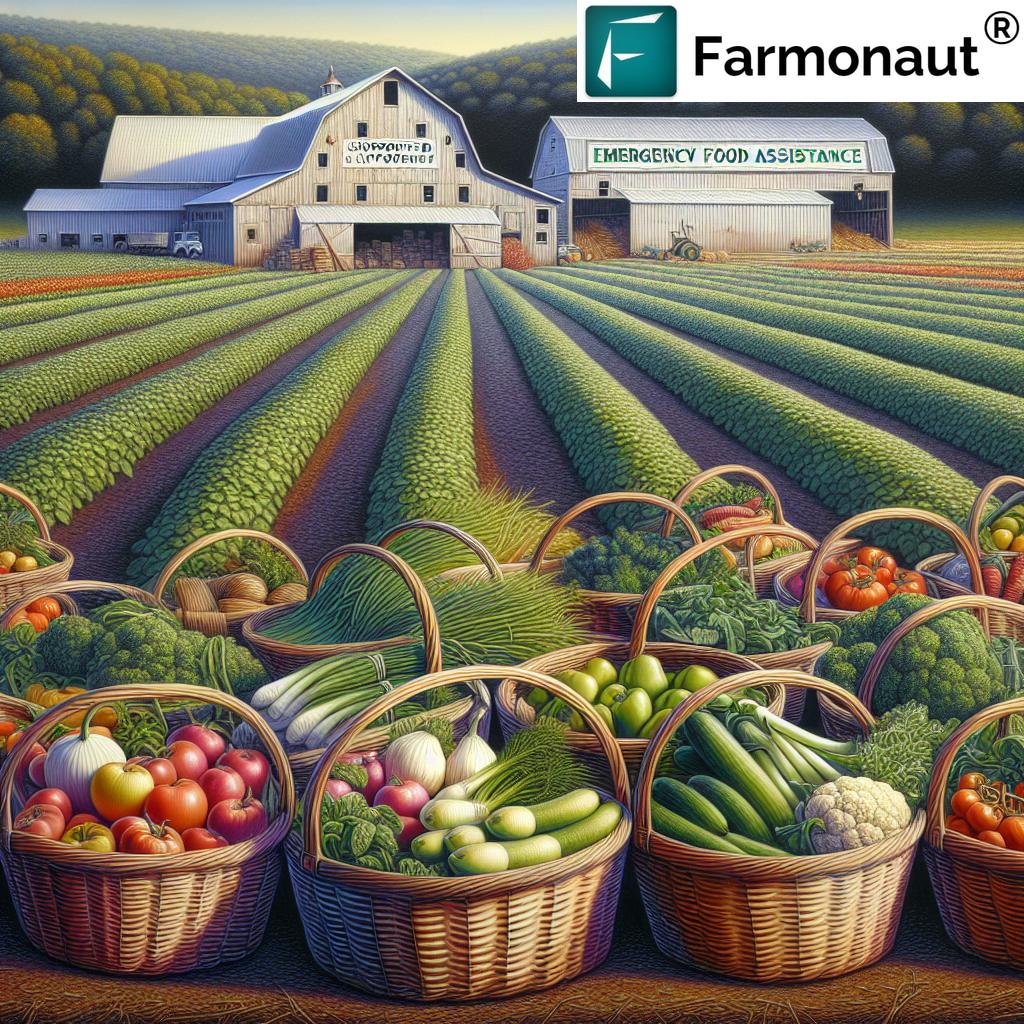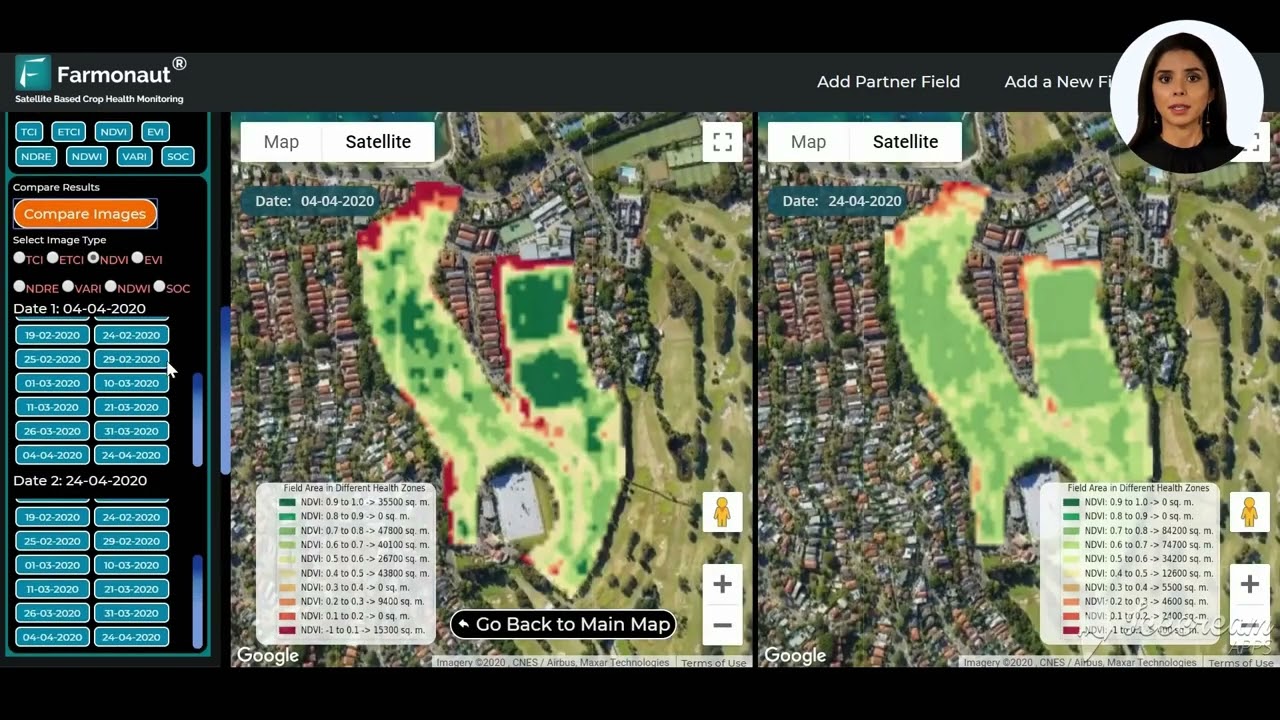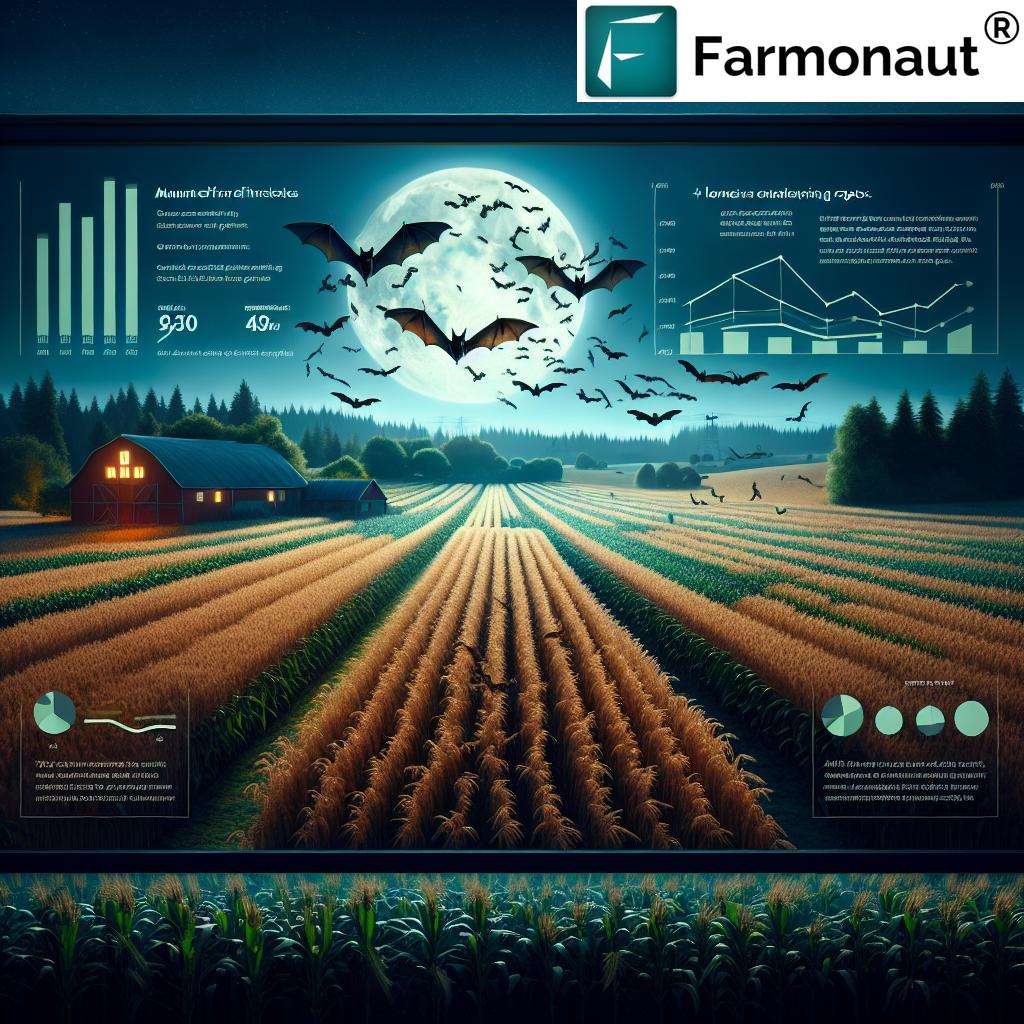Top Methods for Sustainable Agriculture in Pennsylvania!
“Over 1.5 million Pennsylvanians rely on food assistance programs, directly affecting demand for local, sustainably grown produce.”
Table of Contents
- Introduction: Navigating Uncertainty in Pennsylvania’s Food Systems
- Understanding Food Assistance Program Cuts in Pennsylvania
- Impact of Program Cuts: Food Banks, Farmers, and Our Communities
- Top Methods for Sustainable Agriculture in Pennsylvania
- Harnessing Farmonaut Technology for Sustainability & Food Security
- Comparative Impact Table: Who’s Affected & What Can We Do?
- Building Resilience: Solutions for Food Banks, Farmers & Communities
- How to Support Local Food Systems & Pennsylvanian Farmers
- Frequently Asked Questions (FAQ)
- Conclusion: Shaping a Sustainable Future for Pennsylvania
“Pennsylvania ranks among the top 10 U.S. states for sustainable agriculture initiatives supporting community food access.”
Introduction: Navigating Uncertainty in Pennsylvania’s Food Systems
As we collectively work to build resilient, environmentally friendly, and productive food systems, Sustainable Agriculture in Pennsylvania has become more vital than ever. This year, our state faces unprecedented challenges, with food assistance program cuts dramatically impacting local food banks in Indiana County, Westmoreland, and other southwestern counties. Governor Josh Shapiro’s recent lawsuit against the U.S. Department of Agriculture (USDA)—challenging the termination of the Local Food Purchasing Assistance Program agreement—underscores the urgency to balance support for Pennsylvania farmers and the growing community food distribution crisis.
In this comprehensive guide, we’ll explore how these federal decisions resonate across the Keystone State, influencing everyone from food pantries and local farmers to the families they serve. We’ll outline the top methods for sustainable agriculture that can help safeguard the fresh locally grown food supply, provide practical solutions to cope with the increase in food insecurity, and highlight innovative tools—like those provided by Farmonaut—that can help us adapt, optimize, and thrive.
Join us as we delve into the realities of food program cuts, reveal sustainable paths forward, and empower you with technology, knowledge, and action steps to support Pennsylvania’s food security and environmental sustainability.
Understanding Food Assistance Program Cuts in Pennsylvania
Background: Local Food Purchasing Assistance Program and its Termination
In a move that sent shockwaves through food banks and rural communities alike, the USDA abruptly canceled Pennsylvania’s Local Food Purchasing Assistance Program (LFPA) agreement—a decision recently described as unexpected, unlawful, and deeply damaging to our agriculture industry. This termination halted a $13 million commitment that has directly supported 189 farms and supplied local food banks with fresh, locally grown food in our state.
The impact stretches further: As reported by Brandi Fleming, Executive Director of the Indiana County Community Action Program (ICCAP), the USDA action canceled $1.5 billion in national food bank funding. In practical terms, this means thousands of pounds of food received and distributed annually through programs like the LFPA and The Emergency Food Assistance Bonus Program are now lost to Indiana County residents—and in many other counties across the nation.
Why Were These Programs So Important?
- They connected local farmers to food banks and pantries, shortening supply chains and boosting local economies.
- They enabled food banks—such as the Greater Pittsburgh Community Food Bank (GPCFB) and Westmoreland Food Bank—to provide families with fresh, healthy meals, not just shelf-stable goods.
- They circulated funds directly into rural communities and supported sustainable farming practices, ensuring that farms could invest in productivity and innovation.
- They addressed equity by bringing more fresh locally grown food to underserved populations in southwestern Pennsylvania counties and beyond.
The Domino Effect: SNAP Benefits Cuts & Rising Emergency Food Demand
The fallout from the federal snap benefits cuts impact is significant. The Supplemental Nutrition Assistance Program (SNAP), formerly known as “food stamps,” is a critical backbone of community food distribution. For every meal a food bank provides, SNAP fills nine more. With statewide demand for emergency food assistance rising by over 40% in the past two years and SNAP benefits being reduced, local food banks face nearly impossible odds: inconsistent supply, rising distribution costs, and higher food insecurity levels.
Impact of Program Cuts: Food Banks, Farmers, and Our Communities
Food Banks: Limited Resources, Inconsistent Supplies, and Increased Demand
The end of federal food purchasing support leaves food banks in Indiana County, Pittsburgh, Westmoreland, and across Pennsylvania facing uncertainty. According to Westmoreland Food Bank’s Jennifer Miller, for every meal local food banks provide, SNAP offers nine. As SNAP is cut and commodity funding dries up, demand for emergency food assistance skyrockets, but resources dwindle.
- Inconsistent supply: Without federal purchase agreements, the food banks cannot rely on regular, high-quality shipments.
- Rising costs: Without bulk buys subsidized by the state or federal government, it’s more expensive to source fresh food.
- Fewer pounds of food distributed: For example, in 2023, Indiana County Food Bank and partners lost over 70,000 pounds of food due to federal food program cancellation.
Farmers: Risky Investments and Broken Promises
For local farmers in Indiana County and Southwestern Pennsylvania, the now canceled programs had been a lifeline—ensuring sales, supporting investments in equipment or sustainable irrigation, and guaranteeing returns. With abrupt program cancellation, many of us are left questioning whether the money poured into crop expansion or resource improvements will be recouped. This causes:
- Lost revenue: Farms that ramped up production now scramble to find buyers for surplus, risking waste and financial strain.
- Uncertainty about next season: Without predictable contracts and government purchasing, it’s harder to plan crop rotation or adopt sustainable practices.
- Impact on rural communities: Farms underpin local economies. When they struggle, so do the rural communities and small towns that rely on their success.
Communities: Increasing Food Insecurity and Compromised Health
- Food insecurity projected to rise across Indiana County and other affected regions.
- Fresh, local food supply at risk, particularly for lower-income residents who depend on food banks or SNAP for fruits, vegetables, and protein.
- Rural communities facing uncertainty about access as food pantries see their monthly Emergency Food Box distributions nearly double.
Top Methods for Sustainable Agriculture in Pennsylvania
With mounting food assistance program cuts in Pennsylvania, embracing proven sustainable agriculture methods is not just about environmental stewardship—it’s about survival for food banks, farmers, and our communities. Here, we detail methods with direct relevance to our local context, supported by practical technology and the latest research.
1. Diversified Crop Rotation and Intercropping
By rotating crops—such as corn, soybeans, and small grains—and using intercropping techniques, we reduce pest cycles, optimize soil health, and safeguard yields. For example, Indiana County farmers have long used crop rotation to rebuild nitrogen naturally, while intercropping (planting compatible species together) can boost overall productivity and protect against unpredictable markets or program cancellations.
- Benefits: Improved soil fertility, lower disease risk, greater economic resilience.
- Support for Pennsylvania farmers: Less reliance on single-crop markets means more ways to weather funding cuts and maintain supply to local food banks and pantries.
2. Conservation Tillage and Soil Health Management
Promoting minimal or no-till agriculture helps us preserve precious topsoil, reduce erosion, and improve water retention—crucial in a state with unpredictable weather patterns. Healthy soil is the key to robust yields, especially when finances are tight.
- Examples: Reduced-till and no-till farming on Keystone State corn and soybean fields.
- Benefits: Lower fuel costs, less soil disturbance, increased carbon capture. Secure detailed insights and real-time soil moisture data using carbon footprint monitoring solutions.
3. Water-Efficient Irrigation Technology
Sustainable irrigation is especially vital as our climate grows less predictable. Soil moisture sensors, drip systems, and real-time monitoring with satellite technology enable Pennsylvania farmers to optimize water use, saving costs while producing reliable, quality crops for community food programs.
- Benefits: Reduced costs, lower environmental impact, more drought resilience—vital for ensuring continuity even as funding or commodity purchases become inconsistent.
- Embrace innovation through large scale farm management platforms and precision technology to make data-backed decisions about irrigation and input use.
4. Integrated Pest Management (IPM)
Instead of defaulting to chemical solutions, IPM combines data-driven monitoring, mechanical controls, crop rotation, and biological pest controls. This makes pest outbreaks less likely, keeps costs manageable, and protects food bank partners from gaps in supply.
- Benefits: Reduced chemical inputs, enhanced crop health, and preservation of beneficial insects.
- Real-time pest monitoring is now available via Farmonaut’s satellite-based crop health monitoring App—empowering us to act early based on vegetation health and geospatial indicators.
5. Agroecology and Wildlife Habitat Preservation
Creating hedgerows, buffer strips, and wildflower corridors not only supports pollinators—crucial for fruit and vegetable production—but also maintains ecosystem health. With many local farmers in Indiana County now serving partners in the community food distribution network, there’s a strong incentive to maintain biodiversity and long-term farm viability.
- Benefits: Increased biodiversity, long-term productivity, enhanced crop pollination.
6. Digital Farm Management and Geospatial Technology
Tools like Farmonaut’s real-time crop health monitoring and blockchain-based traceability let us optimize every acre—tracking soil, irrigation, and yields while building consumer trust and food system transparency.
- Benefits: More food per acre, transparent provenance for food banks, and records to support grant or insurance claims.
- APIs allow agri-businesses and cooperatives to integrate advanced satellite and weather data directly into their existing systems for optimized logistics and monitoring.
7. Community Supported Agriculture (CSA) and Direct-to-Consumer Models
By strengthening direct markets—such as farm-to-food-bank, farmer’s markets, and CSA boxes—we keep our dollars local and ensure more fresh locally grown food supply reaches those who need it most, even in the event of federal food program cancellation or unpredictable funding cuts.
- Benefits: Reliable sales for farmers, more consistent supply for pantries, and community buy-in for local food systems.
- Traceability solutions ensure every box is secure, sustainable, and transparent, boosting consumer trust. See more at Farmonaut Traceability.
Harnessing Farmonaut Technology for Sustainability & Food Security
As we navigate the ripple effects of food assistance programs in Pennsylvania, digital transformation becomes crucial. Farmonaut, through its suite of satellite-driven and AI-powered tools, is helping us achieve affordable, data-backed, and sustainable agriculture. Here’s how Farmonaut directly enables the top methods outlined above:
- Satellite-Based Crop Health Monitoring: Real-time NDVI data, soil moisture, and crop vigor metrics empower us to optimize irrigation, better manage fertilizer inputs, and boost yields with less environmental impact.
- AI Advisory: Personalized recommendations using Jeevn AI help us respond quickly to emergencies, from pest outbreaks to climate events, supporting resilience amid food program cancellation or rising food assistance demand.
- Blockchain Traceability: Traceability solutions assure partners and food banks that produce is authentic, safe, and locally grown.
- Fleet & Resource Management: Using powerful fleet management tools, we manage delivery routes, monitor vehicle health, and reduce costs for food banks and large farms.
- Carbon Footprinting: Track and reduce emissions from farm activities, align with state or federal sustainability standards, and maximize funding opportunities where environmental compliance is essential.
- API Integration: For organizations, developers, and food system partners, Farmonaut’s API and API documentation allow deep, scalable integration of geospatial, weather, and crop health data.
Comparative Impact Table: Who’s Affected & What Can We Do?
To visualize how federal food program cancellation is reshaping the food landscape in Pennsylvania, we present a comparison of the estimated impacts on key stakeholders and recommend targeted, sustainable solutions for each group.
| Stakeholder | Estimated Impact | Example Effects | Potential Sustainable Solutions |
|---|---|---|---|
| Food Banks & Pantries | Up to 30% decrease in distributed resources; increased inconsistent supply; demand up 40%+ in some counties | Fewer food box distributions; lost fresh food sources; longer pantry waitlists | Strengthen direct farm partnerships; implement digital inventory management; apply for real-time supply tracking |
| Local Farmers | Estimated 10-25% drop in program-related income; high investment risks | Unsold produce; deferred equipment upgrades; uncertainty for next planting season | Adopt precision agriculture; diversify through product traceability and direct-to-consumer sales |
| Community Residents | Potential 15%+ increase in food insecurity rates (Indiana County data); decreased fresh produce access | Shorter meals, less nutrition, increased health issues | Engage in CSAs; advocate for state funding for food banks; support local food campaigns |
Building Resilience: Solutions for Food Banks, Farmers & Communities
1. Increase State Funding for Food Banks & Partnerships
The Pennsylvania Agricultural Surplus System (PASS) is already a critical line of defense—helping channel surplus crops to food banks while compensating farmers for harvest and distribution costs. Governor Shapiro’s proposal for a $4 million increase is a step in the right direction, but further advocacy and efficient management are needed to fill federal gaps.
2. Strengthen Food System Partnerships & Optimize Distribution through Technology
- Equip food pantries and food banks in Indiana County, Pittsburgh, and Westmoreland with platforms to manage inventory, schedule pick-ups, and optimize community food distribution. Farmonaut’s web/mobile app empowers real-time monitoring for all stakeholders.
- Use fleet management technology to reduce food waste and distribution costs, especially for rural communities with long delivery routes.
3. Expand Food Rescue, Donation, and Surplus Redistribution
- Leverage blockchain-based traceability to guarantee the safety, quality, and provenance of donated food—encouraging businesses, farms, and consumers to donate more.
- Adopt policies and tech to track, certify, and reward surplus food donations.
4. Advocate for SNAP Benefits Reinstatement & Emergency Food Assistance Funding
We must urge federal and state lawmakers to restore and enhance supplemental nutrition and emergency food assistance funding. Write letters, join advocacy campaigns, and amplify the stories of families affected by cuts in towns and cities across Pennsylvania.
5. Increase Consumer Engagement & Direct-to-Consumer Agriculture
- Participate in Community Supported Agriculture (CSA) or connect directly with local farms for fresh produce.
- Leverage farm traceability platforms to build trust and reduce fraud, enhancing your food system’s transparency and accountability.
Affordable, Powerful Precision Agriculture for All
Farmonaut offers subscription-based plans for everyone: from individual farmers and cooperatives to agribusinesses and government bodies. With scalable features, you can monitor one field or an entire region, all at a cost far lower than traditional hardware-based solutions.
How to Support Local Food Systems & Pennsylvanian Farmers
- Support your local food bank—through donations or volunteering—especially during times of federal food program cancellation.
- Help build resilient, climate-smart agriculture by encouraging friends, partners, and organizations to use Farmonaut’s suite of technology solutions for sustainable farm and supply chain management.
- Contact your local representatives in Indiana County, Westmoreland, and elsewhere to advocate for increased state funding for food banks and urgent restoration of food assistance programs.
- Use trusted carbon footprinting and traceability tools to inform your purchasing decisions and encourage sustainable, locally grown food supply chains.
Frequently Asked Questions (FAQ)
What led to the recent cuts in food assistance programs in Pennsylvania?
The USDA canceled Pennsylvania’s Local Food Purchasing Assistance Program agreement, ending a $13 million commitment that supplied fresh, locally grown food to food banks and supported 189 farms. Coupled with cutbacks to SNAP benefits, this decision significantly reduced resources for local food banks in Indiana County, Westmoreland, Pittsburgh, and other counties.
How do these cuts affect community food distribution in Indiana County and beyond?
The cuts lead to fewer fresh produce distributions, increased emergency food box waitlists, a spike in food insecurity, and more strain on the food banks’ limited resources. This is especially visible in communities already experiencing economic hardship, with demand for emergency food assistance rising by over 40% in some areas.
What are effective sustainable agriculture methods for Pennsylvania farmers facing funding uncertainty?
- Crop diversification & regenerative soil practices
- Water-efficient irrigation technology
- Integrated pest management (IPM)
- Digital farm management & monitoring
- Direct-to-consumer sales & community supported agriculture (CSA)
How can technology help food banks, pantries, and farmers adapt?
Technology such as Farmonaut’s satellite-based monitoring and advisory systems plays a pivotal role. By providing real-time crop health data, inventory optimization, and blockchain traceability, food banks and farmers can maximize yield, reduce waste, and maintain transparent food chains, even with inconsistent funding.
How can I support local food banks and Pennsylvania’s agriculture industry?
- Donate to or volunteer at your local food pantry.
- Purchase food from local farms and farmers’ markets.
- Advocate for increased state funding for food banks and emergency relief programs.
- Encourage ag-tech adoption for greater program impact and food security.
How does the increase in food insecurity affect public health?
Rapid increases in food insecurity can result in malnutrition, increased health complications, and reliance on less healthy shelf-stable foods, disproportionately affecting vulnerable populations in Indiana County, Westmoreland, and across the Keystone State.
Is Farmonaut a provider of emergency food aid or a government agency?
No. Farmonaut is an agricultural technology platform that empowers sustainable farming and supply chain management through satellite, AI, and blockchain tools. It is not a food bank, manufacturer, marketplace, or regulatory body.
Conclusion: Shaping a Sustainable Future for Pennsylvania
As we navigate the challenges of program cuts, rising emergency food assistance demand, and climate risks, the call for innovative, sustainable agriculture in Pennsylvania has never been stronger. By embracing technology, diversifying crops, optimizing resource use, and engaging in direct local food initiatives, we not only buffer against short-term shocks but also lay the foundation for a healthier, more resilient food system.
Whether you’re a farmer, food bank manager, policy advocate, or an engaged community member in Indiana County, Pittsburgh, or Delmont, your role is vital. Leverage digital tools, advocate for critical funding, and continue supporting fresh locally grown food supply for all Pennsylvanians. Let’s bring food back to more tables—sustainably, equitably, and with the power of data-driven insights and community action.
Ready to take the next step? Explore Farmonaut’s free and advanced tools to boost productivity, transparency, and sustainability for your farm or community food project.
Together, we can transform uncertainty into opportunity—building a Keystone State that is more food secure and environmentally sound for years to come.






















